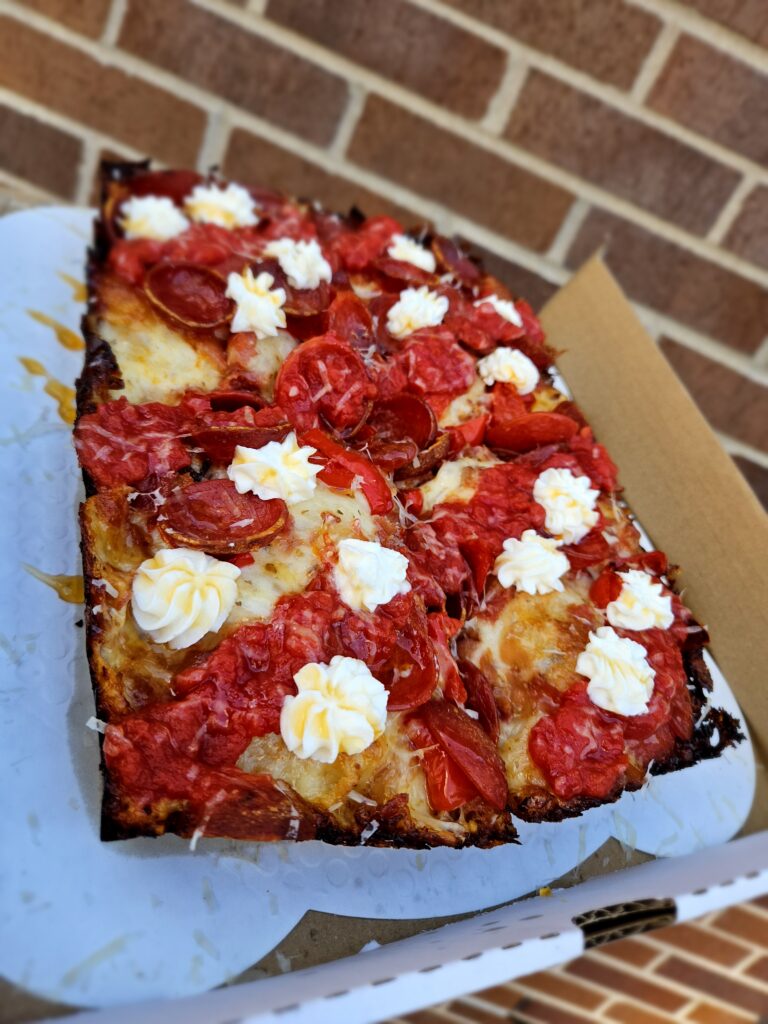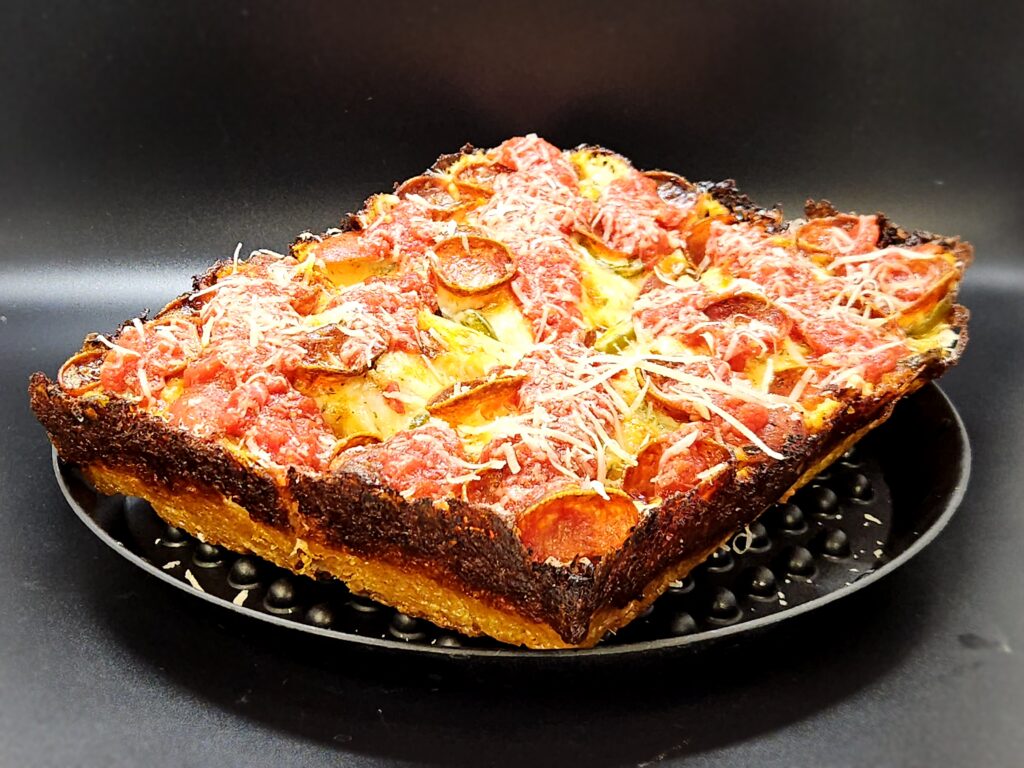One day recently, Paul Urban, who co-owns Block 16, did some math.
For the first time in a long time — maybe ever — he noticed business at the popular downtown Omaha lunch spot slowing down. At the same time, food prices were steadily rising. Together, it felt significant enough to investigate.
“I sat down one day, and I added up every cost, and I realized that every time we sold a Block burger, we were losing $1.24,” he said. “We’re OK, but we had to raise our prices. We had to do it just to survive.”
Urban isn’t the only one who is feeling the pressure. In the past month, several local restaurants have announced plans to close their doors for good.
Same-store sales traffic at U.S. restaurants was down by 3.3% this year through Oct. 6 versus the same period in 2023, according to a story in the Wall Street Journal. Visits to casual-dining restaurants fell 4.5% during that same period.
Diners are also paying some of the highest food prices in memory. Compared to four years ago, grocery prices are up about 20%, according to consumer price index data from the Federal Reserve Bank of St. Louis. And though inflation decreased in September, according to the latest consumer inflation report, it doesn’t feel that way for most people because most grocery and restaurant menu prices haven’t come back down, instead leveling off at their higher level.
Urban said the original price of a Block 16 Block burger — one of the restaurant’s signature menu items — was $8.95. In April 2022, rising food costs forced him to raise the price to $12.95.

Restaurants aren’t raising prices to gouge customers, said Ernie Goss, a Creighton University economics professor. They’re doing it to stay in business, he said.
He explains the resulting scenario for diners like this: 20% of the dining public is doing just fine financially and likely still can afford to eat out as before. Those individuals are probably the ones supporting Omaha’s higher-end, fine dining restaurants, he said.
But the majority of Nebraskans — maybe those who ate out only occasionally, and often at cheaper fast casual or chain restaurants — are more acutely feeling the pain of rising prices, and are going out less or not at all.
“Individuals who have the money are getting pinched, but they still have the money to go out to eat,” he said. “It’s the lower income individuals who are really getting pinched, and they downgrade to eating at home and other, even cheaper food.”
Those are the same shoppers choosing Costco and Walmart to buy bulk groceries at competitively low prices, he said. If they do dine out, most likely they are choosing a fast food restaurant.
Brett Geiger, who runs the Izzy’s Pizza and an accompanying food truck, said even national exposure — his business was one of several local restaurants featured on the Food Network’s “Diners, Drive-ins and Dives” earlier this year — doesn’t protect a restaurant from scarily slow days when customers simply don’t show.

Geiger turned to social media several times this fall, reminding customers of their hours and location and posting mouth-watering pizza photos in an attempt to drum up business. In September he turned to social media again, announcing that Izzy’s was pulling out of a planned new location in west Omaha.
“People expect we have a line out the door because we were on television,” he said. “Perception and reality are just kind of two different things.”
He said the business has seen price increases in ingredients like cheese and meat. While researching chicken wings, a potential new menu item, the cost of the meat itself was much higher than Geiger anticipated.
“I would have had to charge like, $30 for a pound of wings, and that’s just ridiculous,” he said. “I just don’t think the public is educated in that kind of stuff. They see someone raise prices, and they think we’re just trying to make more money. It’s not about making more. It’s about staying alive.”
Ongoing supply chain challenges are one contributing factor to the higher prices restaurants pay their suppliers, Goss said. Some restaurants are responding to higher prices by serving smaller portions or changing suppliers altogether.
Logan Barr, who runs Plum Creek Farms based in Burchard, a popular supplier for locally raised chicken, said in a post-COVID world, his business model has taken a 180-degree turn.



“It’s been a transformation away from the restaurant business,” Barr said.
Not long ago, 70% of Plum Creek’s business was selling whole birds to chefs at restaurants. Plum Creek became well known through high-end restaurant menus, and its name regularly appeared on chalkboards inside restaurants during the boom of the “farm-to-table movement.”
Now, he sells primarily to grocery stores, local butchers and directly to home cooks themselves.
“Some of it was COVID. People started cooking at home, and were more willing to buy a quality product to eat at home.”
Some restaurants that bought Plum Creek chicken have gone out of business. Others no longer have the staff required to break down whole Plum Creek birds and use all the parts in the “nose to tail” style of cooking necessary to make the higher cost worth it.
“Most of our restaurant customers now are country clubs,” he said. “Most of the time, our price points no longer fit the restaurant margins.”
A few restaurants, including Block 16, Dante, Dirty Birds and Via Farina, still do buy Plum Creek chicken, wanting to stay committed to the local producer and the quality. But that commitment puts serious pressure on the restaurant’s profit margin and the price of menu items.
Part of the increase in prices is related to the labor shortages – and subsequent wage increases – coming out of COVID, Goss said.

Goss said hourly pay for restaurant workers is now often significantly above the federal minimum wage. Some restaurants use automated labor, like self-service checkout, but customers often perceive that as low-quality customer service. Even some drive-through windows are now closing because of lack of workers, he said.
“There has been a significant sea change in the way all of us eat and shop,” Goss said. “I don’t know if we are ever going back.”
For Urban, that sea change means moving away from some more “fine dining” style dishes when Block 16 is open on weekend evenings and focusing more on sandwiches and affordable items. Just last week, Urban posted that the restaurant’s beef prices dropped slightly. He adjusted the price of that signature Block burger accordingly, shaving a dollar off the price. It’s now $11.95.
For the first time in years, something on the Block 16 menu – their iconic burger, in fact – became more affordable.
“We are … literally waiting for the day we can get closer to our old prices,” he wrote. “We’re not there yet but it’s a step in the right direction. Thanks for sticking with us through all of this. Come in this week and see if the burgers taste better a lil bit cheaper!”



7 Comments
Isn’t workers who were getting paid less than a living wage (e.g. the federal minimum) getting paid better a good thing? Do we want a food industry that runs on paying less than people can live on? Is the poverty-wage pre-covid status quo really a way to help other struggling households? Or the child labor found last year in beef production in Grand Island?
The wage share of GDP overall has been falling for decades as the gains of economic growth went to the owners of capital.
Thanks, Sarah, for this deep dive into an issue dear to both of our hearts and to those of our primary dinner partners.
Given USA birth statistics, reforming immigration policies that yield increasing numbers of legal immigrants is likely the only pathway in the future to provide the hands-on service our food establishments need.
Great article, thank you SBH
Great article Sarah even while it leaves one concerned for our future.
This was such an interesting story. I wish there had been information from experts on what is driving the higher costs to the local restaurants. The supply chain excuse just doesn’t wash anymore. There is a significant story to be told about the big corporations who raised prices during COVID-19 (maybe needed, but now?) and kept the prices at a higher rate. Businesses of all sorts are quick to claim higher labor costs. But if we were all making more money, without other pressures, we would be spending more money at these places. The old adage of “follow the money” is truly applicable here. Corporations are making record profits while their consumers continue to pay the price.
Compare the price the producer gets to the cost to the cook.
As food costs rise, many local restaurants are forced to adjust prices to stay afloat. At Block 16 in Omaha, co-owner Paul Urban realized the rising costs were eating into profits, especially for their signature Block burger. After a price increase in 2022, they’ve recently lowered it slightly due to a drop in beef prices.
This trend is impacting all types of dining establishments, from casual to fine dining, forcing restaurants to raise prices, reduce portions, or change suppliers. At Block 16, they remain committed to local ingredients like Plum Creek chicken, even if it means higher menu prices.
For diners, these price increases are a necessary part of the industry’s survival, reflecting broader trends seen at places like Texas Roadhouse Menu where menu costs are also impacted by rising food prices.